2nd Grade Science Curriculum {Little Science Thinkers}
Teaching science in an effective, engaging way can be a challenge, right?
Curriculum that comes from big publishers or from teacher websites often contain too much or not enough. You want a one-stop-shop for content-focused, user-friendly science curriculum that is
easy for you to plan and is exciting and enjoyable for your students.
If you are looking for a curriculum that checks all of these boxes, this post is for you.
It’s everything you need to introduce, teach, practice, and assess your students. No more spending weekends piecing together TPT resources or ideas from Pinterest. Little 2nd grade Science Thinkers is based on the Next Generation Science Standards, but also incorporates standards from various states who do not follow the NGSS. The curriculum is 100% researched, written, and created by me, a teacher. It’s teacher-friendly and student-approved.
First let’s look at the topics you’d expect to teach in 2nd grade science.
2nd grade science topics typically include:
– Properties of Matter (classifying matter, changing states, reversible and irreversible changes in matter, structures)
– Living Things (needs of living things, seed dispersal and pollination, animal survival, migration, hibernation, dormancy, life cycles, inherited traits, fossils)
– Habitats (desert, forests, grassland, marine, freshwater, polar, tundra, microhabitats)
– Earth’s Systems (landforms, wind, water, erosion)
The unit featured in this post focuses on Properties of Matter.
(Click here to see our Living Things unit)
Here is the format of the unit:
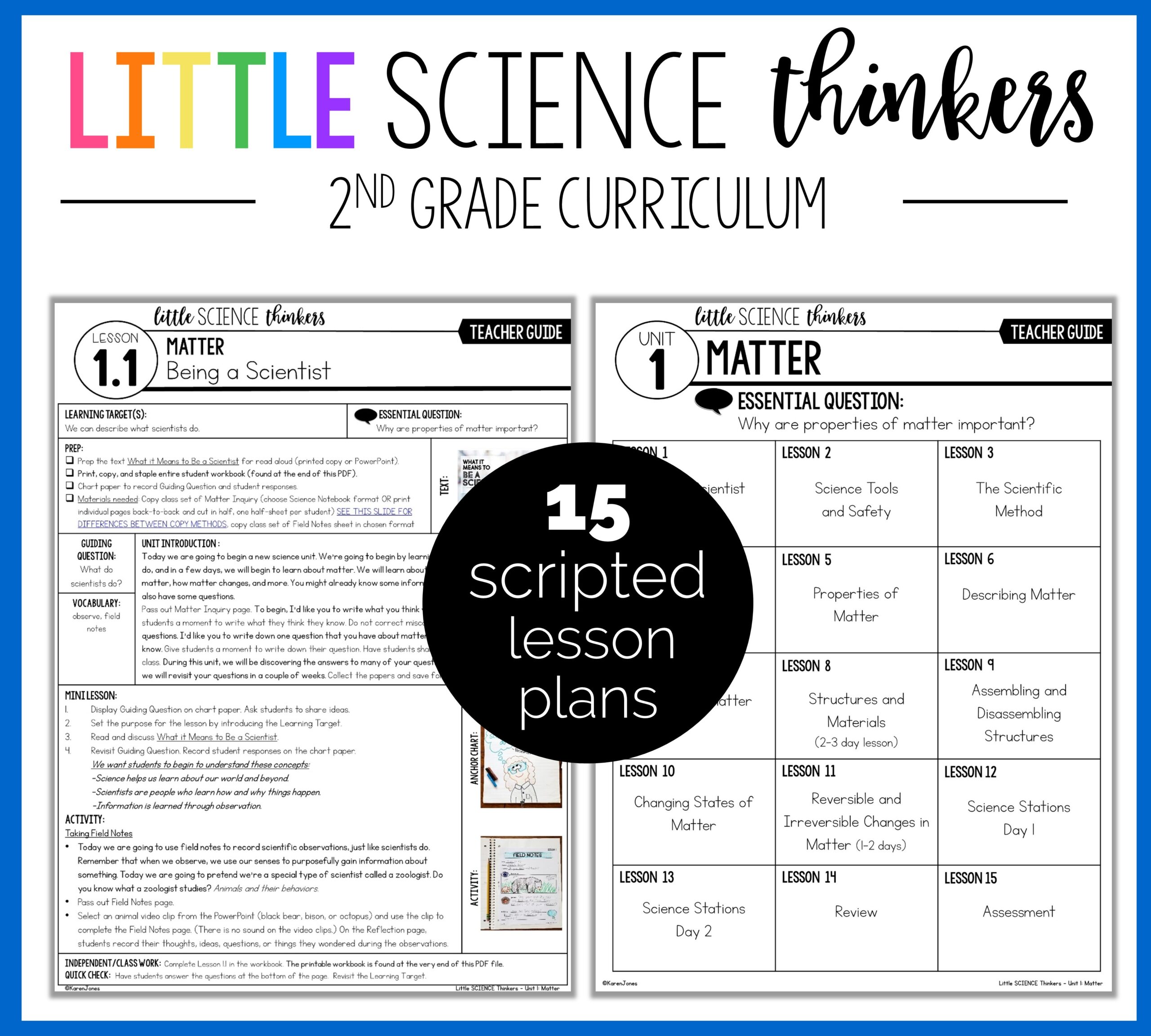
1. Print and use complete lesson plans with a full teacher guide.
Each four-week unit is meant to be taught three times per week with 30-minute lessons. I know that your time is valuable and you need to make the most of every minute, so each lesson is jam packed with content and engagement.
The lessons are quick-paced, written in teacher language, and primary-friendly. You could give these plans to a sub or student teacher, and there would be no question as to what they need to do! It’s all there for you.
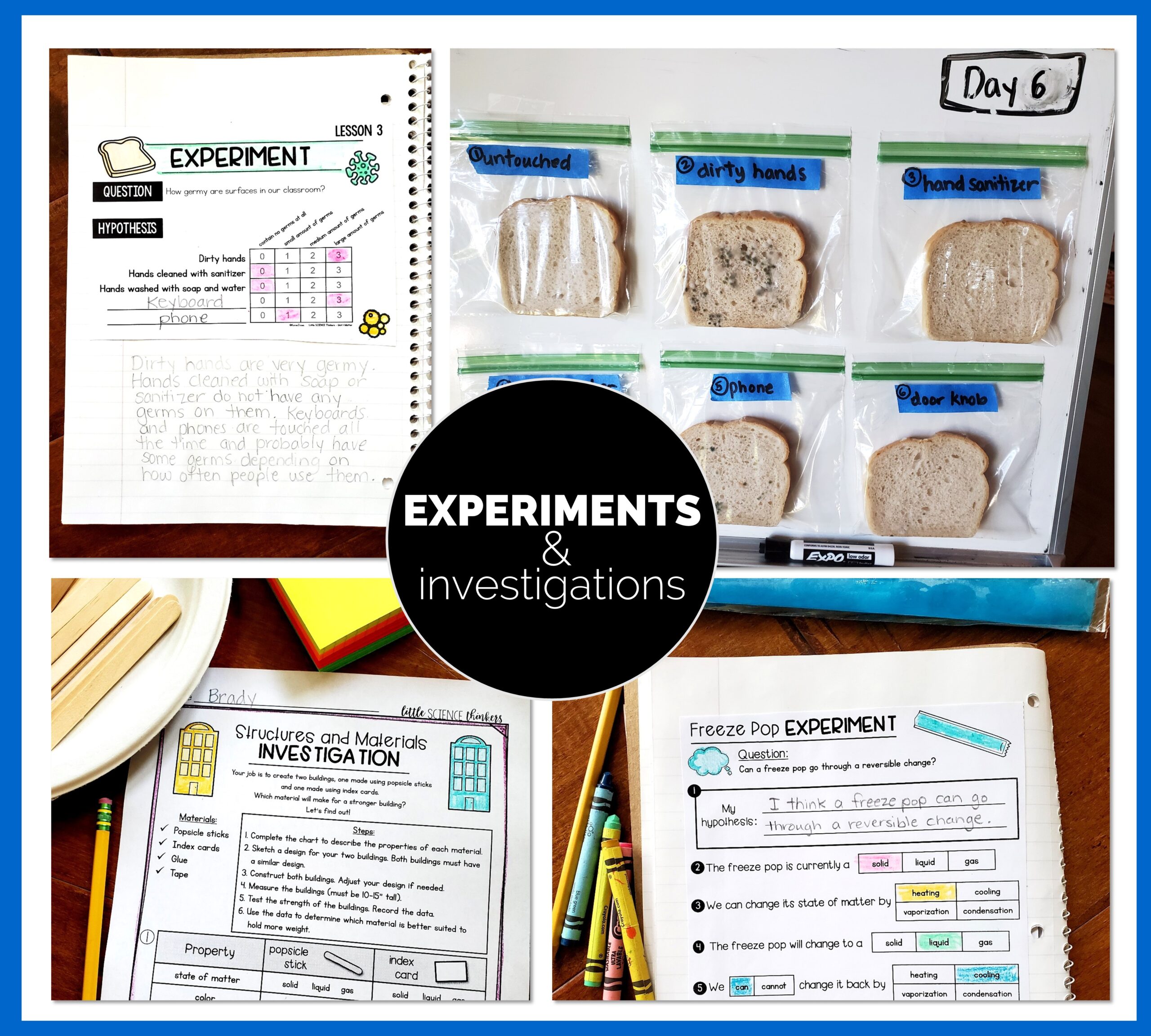
2. Engaging Science Experiments, Investigations, and Activities.
Hands-on, easy-to-prep science experiments and investigations that will engage your students and help to broaden their scientific knowledge.
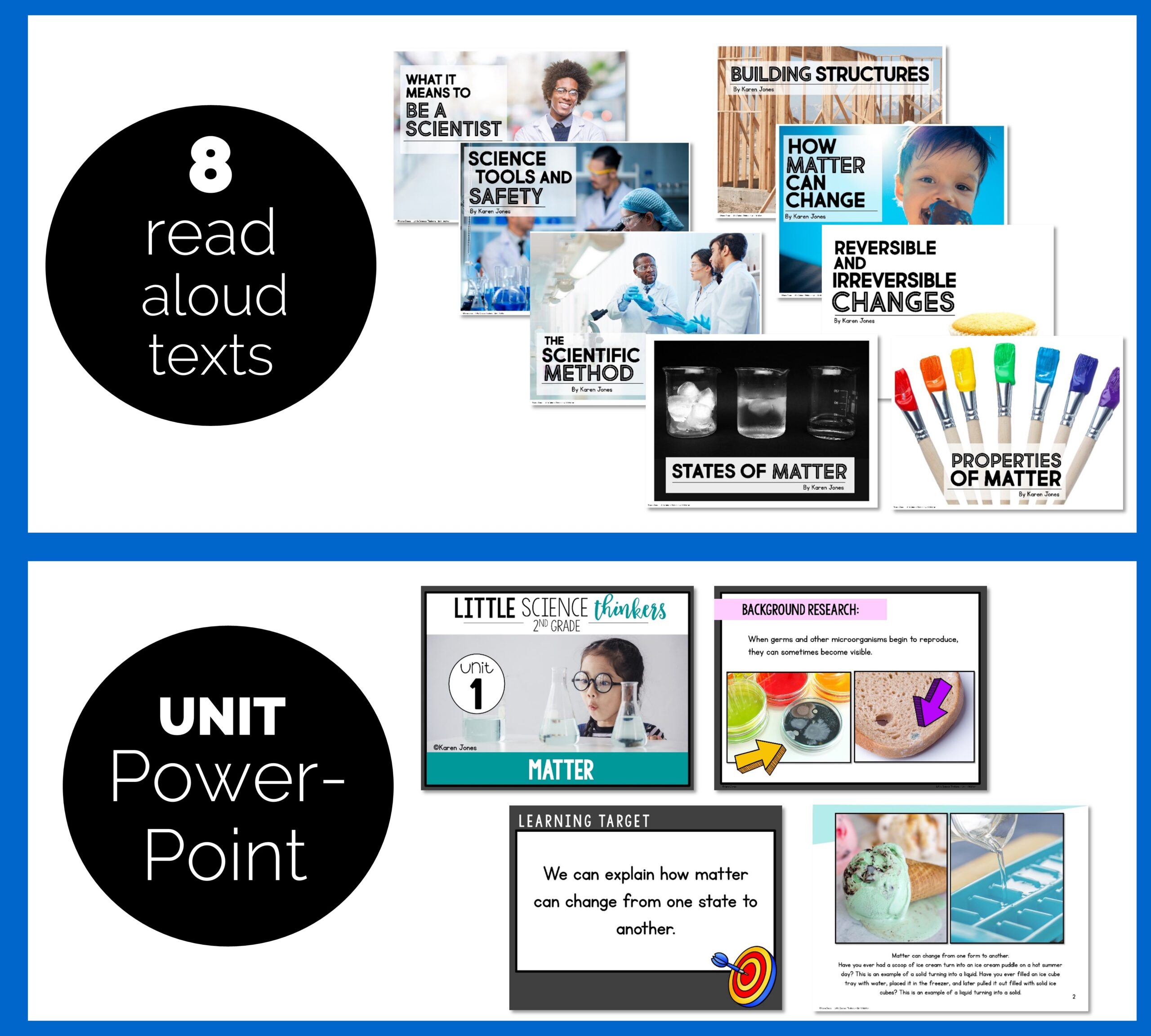
3. EIGHT, nonfiction read aloud texts in both a printable and projectable format.
4. A PowerPoint to guide each and every lesson.
Use the PowerPoint to project the learning targets, books, activities, and investigations. It guides your teaching each lesson and can be easily formatted to Google Slides for remote learning.
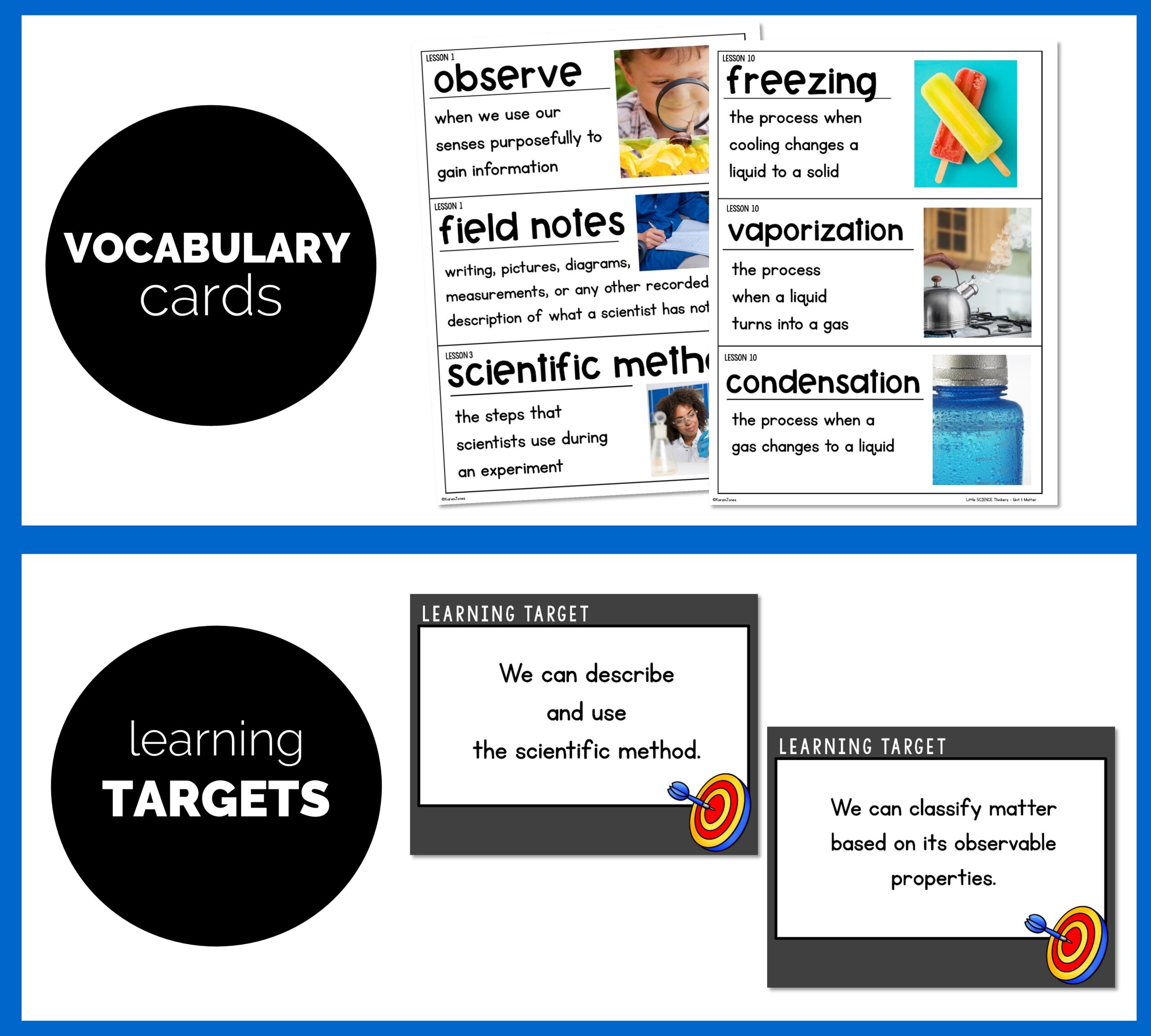
5. Vocabulary Cards to extend your students’ scientific vocabulary.
6. Essential Question and Learning Target posters in both a printable and projectable format.
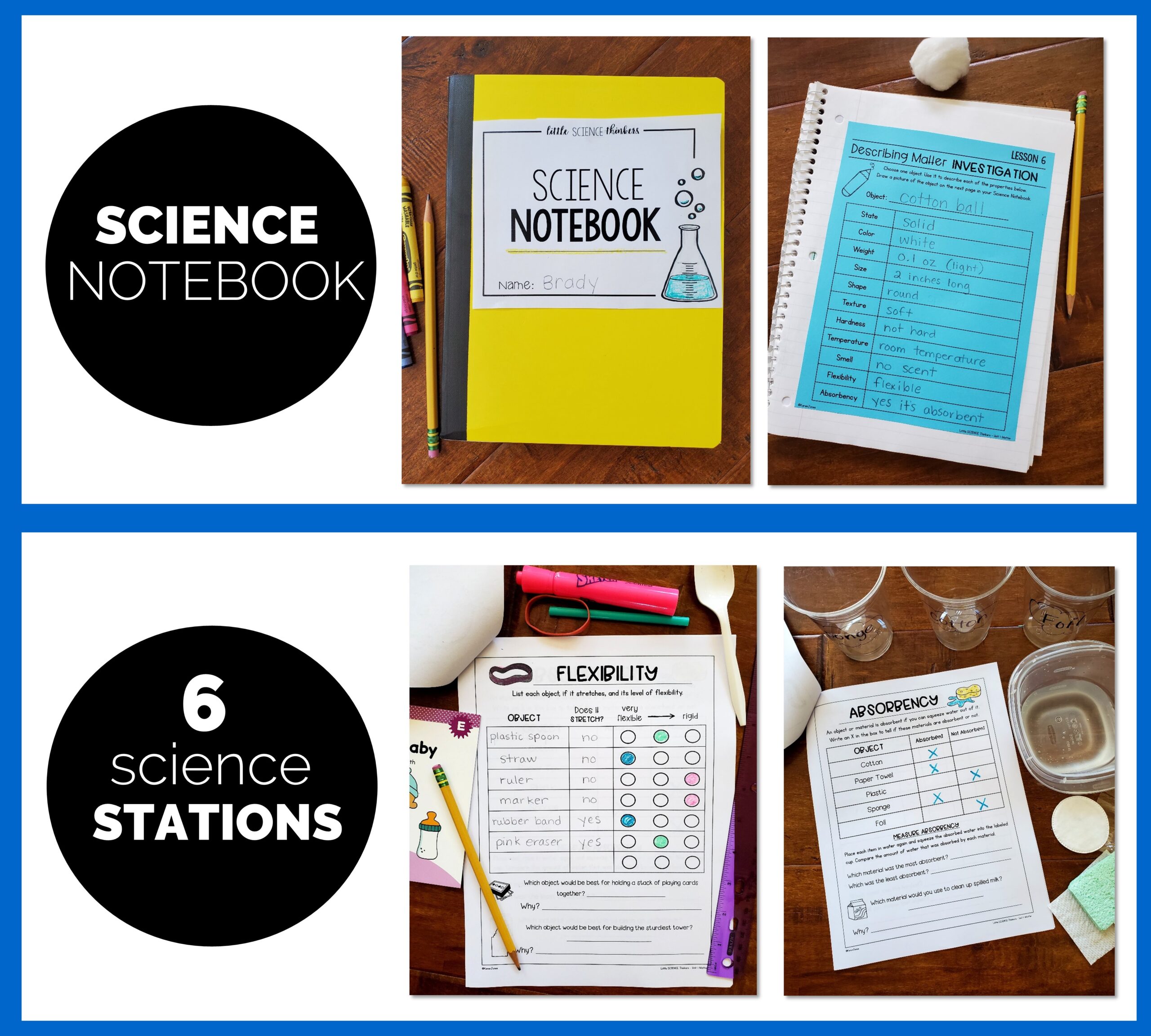
7. Activity pages in varied formats including single-print sheets or a spiral/composition Science Notebook.
8. 6 Hands-On Science Stations to extend your students’ learning and understanding of the key topics of the unit.
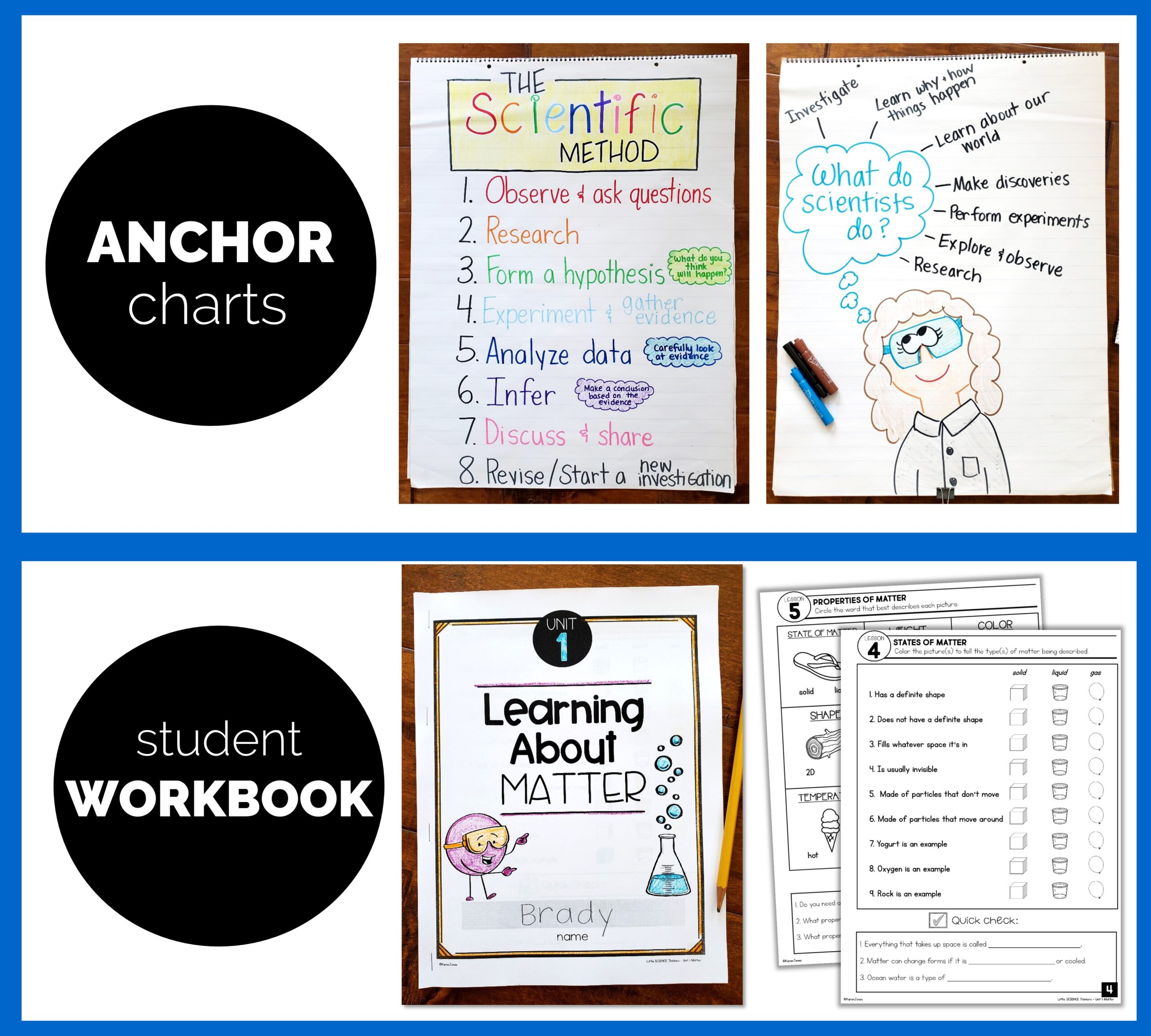
9. Anchor chart examples for you to follow.
10. Student Workbook that allows for independent practice and progress monitoring.

11. Daily quick checks that allow you to quickly assess key points of the lesson.
12. A developmentally appropriate end-of-unit Assessment.
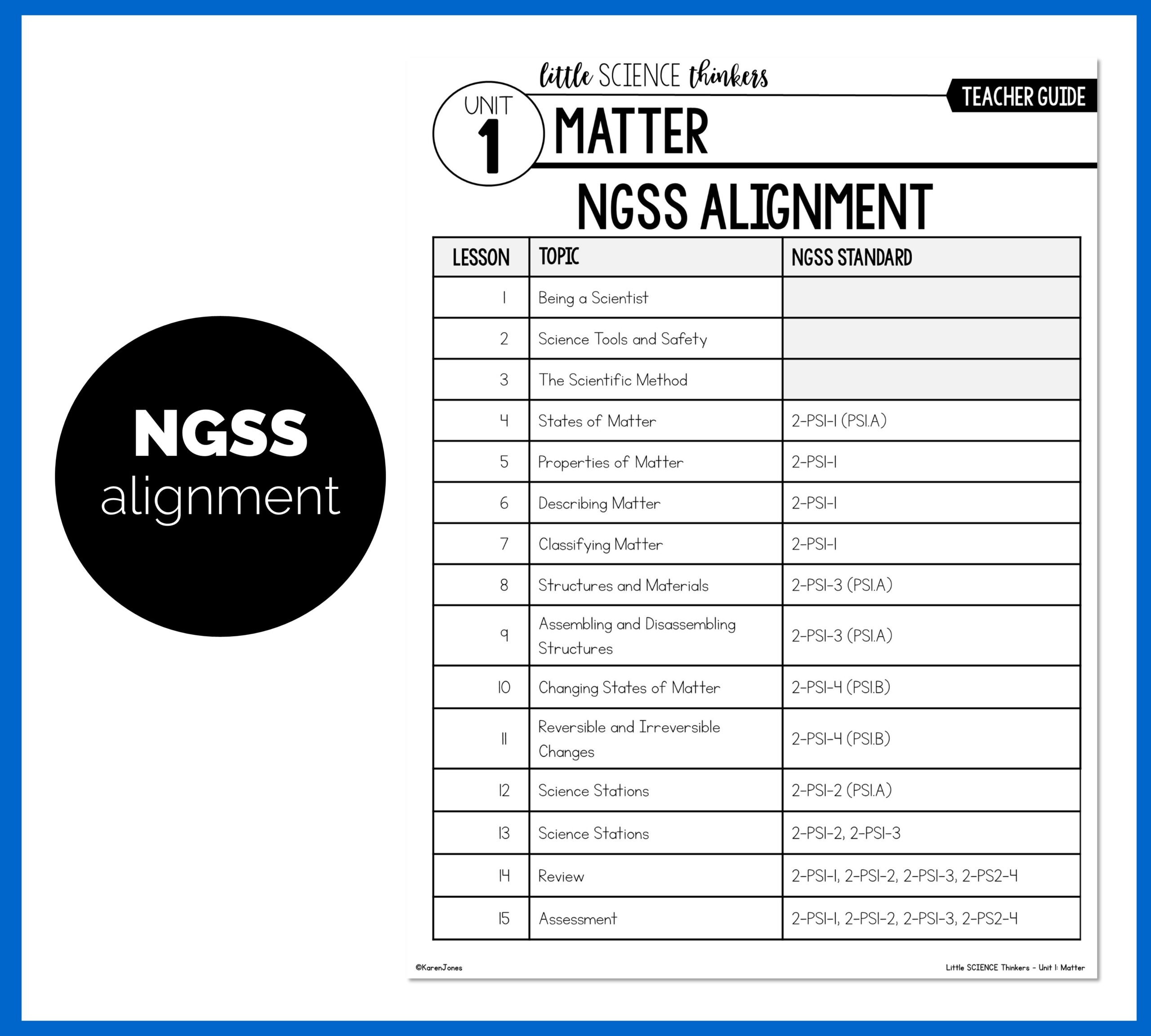
13. Alignment to the Next Generation Science Standards.
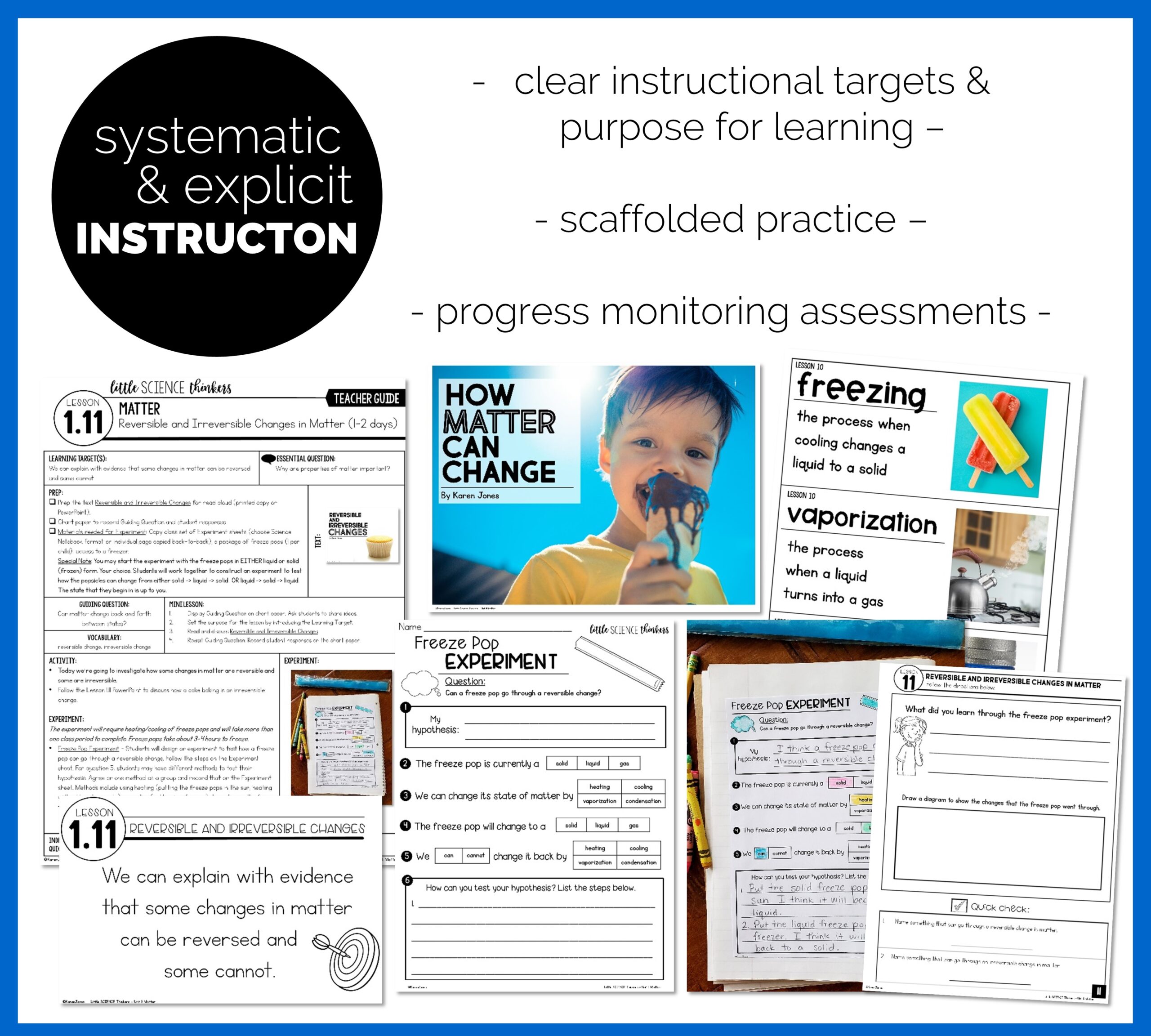
14. Systematic and Explicit instruction utilizing best practices in primary instruction.
Lessons follow this format: Guiding Question, Learning Target, Mini-Lesson with Explicit Instruction, Guiding Question Reflection, Guided Practice/Investigation/Experiment, Independent Practice then Quick Assessment.
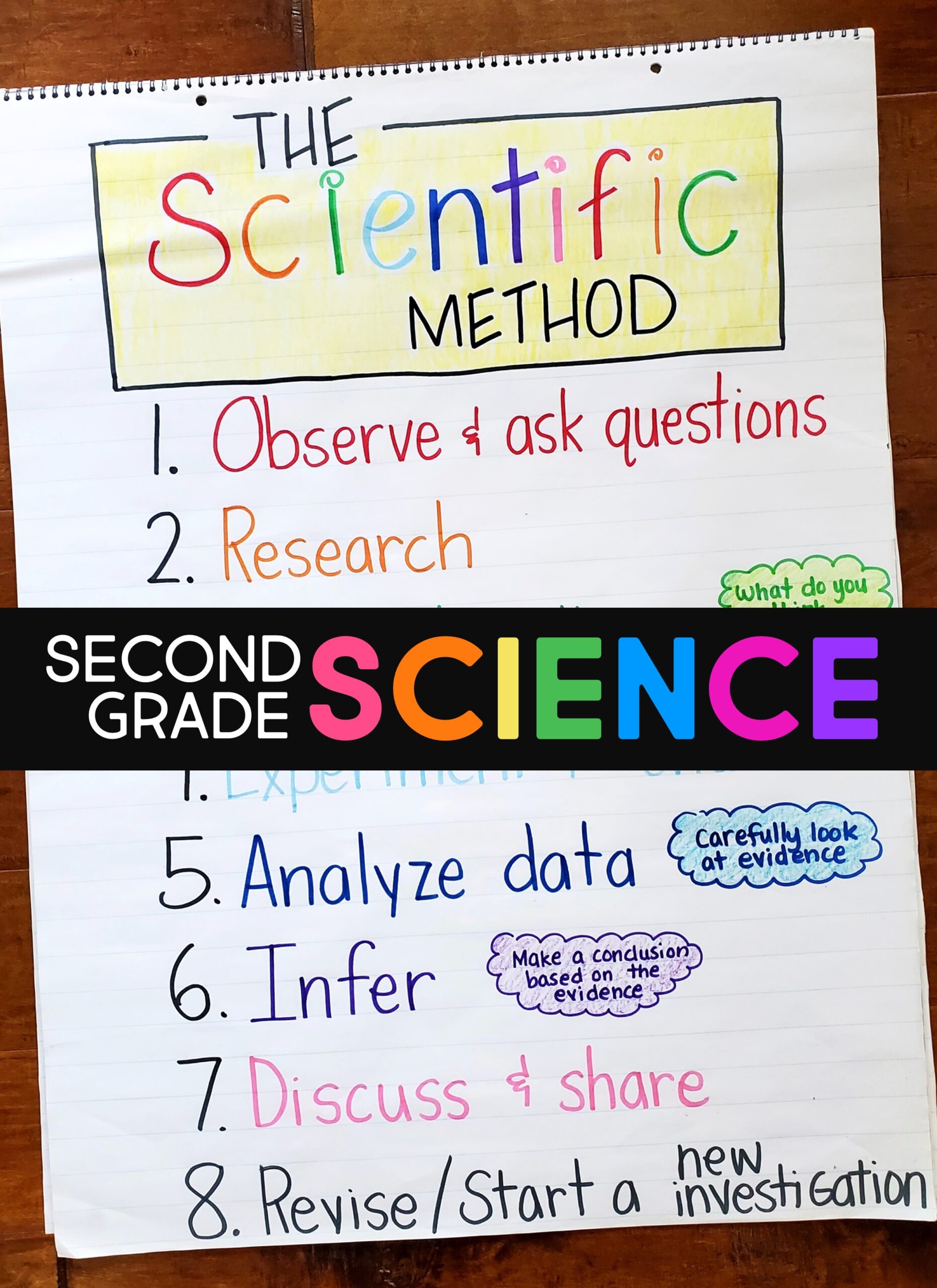
Outline of Little 2nd Grade Science Thinkers Unit 1: Matter
Lesson 1: BEING A SCIENTIST
Lesson 2: SCIENCE TOOLS AND SAFETY
Lesson 3: THE SCIENTIFIC METHOD
Lesson 4: STATES OF MATTER
Lesson 5: PROPERTIES OF MATTER
Lesson 6: DESCRIBING MATTER
Lesson 7: CLASSIFYING MATTER
Lesson 8: STRUCTURES AND MATERIALS
Lesson 9: ASSEMBLING AND DISASSEMBLING STRUCTURES
Lesson 10: CHANGING STATES OF MATTER
Lesson 11: REVERSIBLE AND IRREVERSIBLE CHANGES
Lesson 12: SCIENCE STATIONS
Lesson 13: SCIENCE STATIONS
Lesson 14: REVIEW
Lesson 15: ASSESSMENT
Ready to transform your science block….?
CLICK HERE TO VIEW OR
PURCHASE THIS UNIT on Teachers Pay Teachers.
CLICK HERE TO VIEW OR PURCHASE THIS UNIT on MrsJonessClass.com.
As always, let me know if you have any questions.
-Karen-

